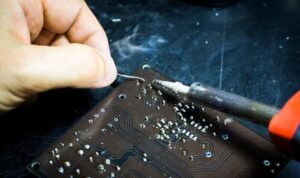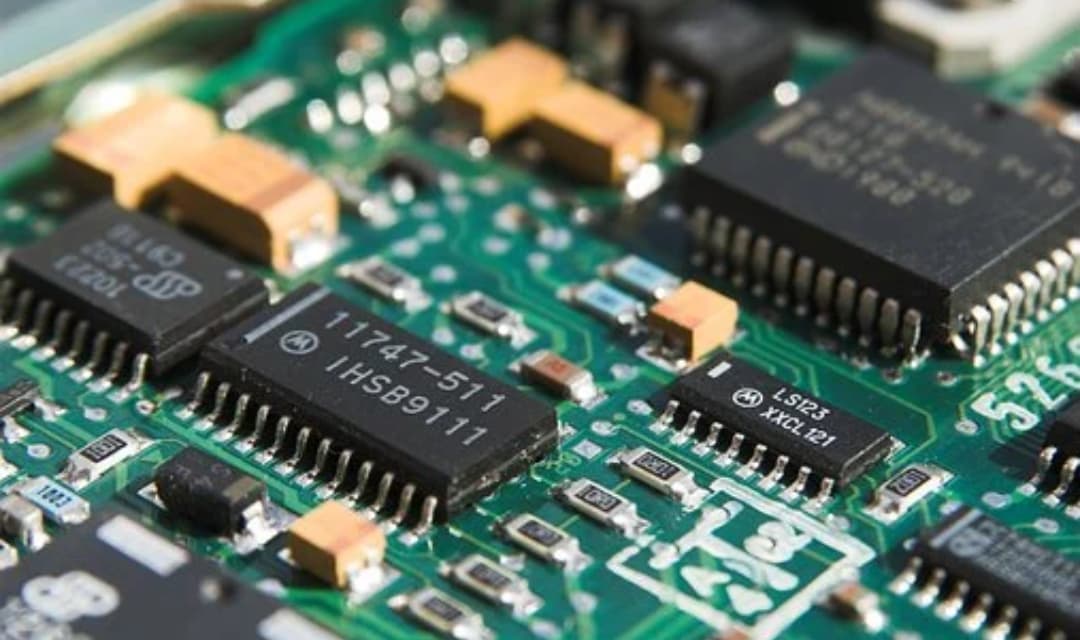Printed circuit boards, or PCBs, support electronic components mechanically and electrically, using conductive tracks, pads, and other features etched from copper sheets laminated onto a non-conductive substrate. A PCB populated with electronic components is a printed circuit assembly (PCA), also known as a printed circuit board assembly (PCBA).
There are numerous methods of assembling PCBs, from the simple manual placement of components by hand to highly automated processes using robotic machines. The choice of method will depend on many factors, including the type and quantity of PCBs being assembled, the required accuracy, the complexity of the design, the available budget, and the skills of the assembly staff.
In this article, we will briefly examine the different methods of PCB assembly and explore some of the most common types of PCBs.
PCB Assembly Methods
Assembling PCBs requires a combination of manual and automated processes, depending on the type and complexity of the board being assembled. As expected, you need to have a budget to cover the cost of the equipment and materials required for each process. You can get PCB Assembly Quotes and find out the cost of each assembly process step. You can choose based on their location and compare which will work for you best. The following are the most common methods of PCB assembly:
- Manual placement
- Pin in paste (PIP)
- Surface-mount technology (SMT)
- Through-hole technology (THT)
- Mixed technology

Let’s take a closer look at each of these methods in turn.
Manual Placement
Manual assembly is the most common method of PCB assembly and involves using tools such as pliers, screwdrivers, and tweezers to place the components on the board. It is a slow and tedious process, but it is cheap and can be used for many applications.
Manual assembly is the most common method of PCB assembly and involves using tools such as pliers, screwdrivers, and tweezers to place the components on the board. It is a slow and tedious process, but it is cheap and can be used for many applications.
The main disadvantage of manual assembly is that it is prolonged, typically taking several times longer than automated methods. This makes it unsuitable for high-volume production or complex circuits. However, it remains popular due to its low cost and flexibility – it can be used for many applications, from simple prototypes to high-volume production runs.
Pin in Paste (PIP)
Pin-in-paste is a semi-automated method of PCB assembly that uses a stencil to apply a solder paste to the board. The components are then placed on the board by hand before the whole assembly is placed in a reflow oven to melt the solder and create the connections.
PIP is faster than manual assembly, reducing the time to place the components on the board. However, it is still relatively slow and only suitable for low- to medium-volume production runs.
Once the solder paste has been applied to the board, the components are placed on the board by hand. Then, the whole assembly is placed in a reflow oven to melt the solder and create the connections.
Surface-Mount Technology (SMT)
SMT is a fully automated method of PCB assembly that uses machines to place the components on the board. The components are first picked up by a machine using a vacuum nozzle before being placed in their correct position on the board.
The main benefit of SMT is that it is much faster than manual or PIP assembly, as the whole process is automated. This makes it suitable for high-volume production runs. In addition, SMT allows for a greater density of components, as the components can be placed closer together.
However, SMT has some disadvantages. First, it requires specialized equipment that can be expensive to purchase and maintain. Second, SMT can only be used for surface-mount components – through-hole components cannot be placed using this method.
Through-Hole Technology (THT)
THT is a semi-automated method of PCB assembly that uses machines to place the components on the board. The holes in the board are drilled using a CNC machine before the components are placed correctly and soldered.
With THT, the process of drilling the holes is automated, but placing and soldering the components is still done by hand. This makes it slower than SMT, but it has the advantage of being able to accommodate both surface-mount and through-hole components.
Mixed Technology
Mixed technology is a term used to describe boards that contain both surface-mount and through-hole components. These boards are typically assembled using a combination of THT and SMT, with the through-hole components being placed manually and the surface-mount components being placed using an SMT machine.
Mixed technology boards are becoming increasingly popular as they offer the best of both worlds – the flexibility of THT assembly combined with the speed of SMT assembly.
Types of PCBs
There are two main types of PCBs: single-sided and double-sided. Let’s take a look at each of these in turn.
Single-Sided PCBs
Single-sided PCBs are the simplest type of PCB, as they only have components on one side of the board. The other side of the board is usually left blank, although it can also be used for soldering connections or mounting components.
Single-sided PCBs are typically used for simple circuits, as they are easy to design and manufacture. However, they have a limited number of connection points, making them unsuitable for more complex circuits. In addition, single-sided PCBs are not suitable for high-density applications, as the components must be spaced further apart to allow room for soldering.
Double-Sided PCBs
Double-sided PCBs have components on both sides of the board. This allows for more complex circuits with twice as many connection points. In addition, double-sided PCBs can be used for high-density applications, as the components can be placed closer together.
However, double-sided PCBs are more difficult to design and manufacture than single-sided PCBs, as they require special equipment to drill through the board. In addition, they are more expensive to produce, as they use twice as much material.
PCB assembly is a complex process that involves placing and soldering components onto a substrate. There are many different methods of assembly, ranging from manual to fully automated. The most appropriate method for your application will depend on volume, complexity, and cost. In general, automated methods are more accurate and faster than manual methods but are also more expensive.

